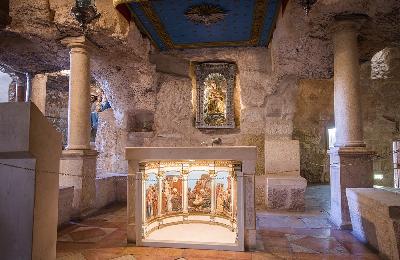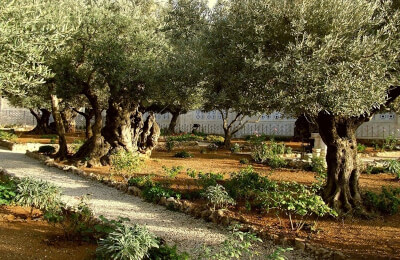5. Bethlehem and Christian Jerusalem Promotion
204. Intercession of the Theotokos Promotion
543. Christmas in Bethlehem Promotion
175. Unusual Bethlehem Promotion
 175₪
175₪
 175₪
175₪
553. Jerusalem Before Easter Promotion
 175₪
175₪
 175₪
175₪
Jerusalem and Bethlehem Promotion
Jerusalem & Bethlehem Promotion
Jerusalem & Bethlehem (up to 8 people) Promotion
Jerusalem & Bethlehem (up to 18 people) Promotion
We also found excursions from other cities that are close to your departure city
Other excursions that also deserve your attention
Church of the Nativity: Bethlehem's Holy Gem
Nestled in the heart of Bethlehem, a city renowned for its historical and spiritual significance, stands the Church of the Nativity. This ancient church is a symbol of the Christian faith and is believed to mark the very spot where Jesus Christ was born. It is not only a place of worship but also a testament to centuries of history and devotion. In this exploration of iconic sights in Israel, we embark on a journey to uncover the spiritual, historical, and cultural importance of the Church of the Nativity, along with intriguing facts that make it a cherished destination for pilgrims and tourists alike.
Church of the Nativity: A Sanctuary of Faith
1. Historical Significance
The Church of the Nativity is one of the most revered Christian sites globally, primarily because it commemorates the birthplace of Jesus Christ. It is believed to have been built over the cave or grotto where Mary gave birth to Jesus, making it an essential pilgrimage destination for Christians worldwide.
a. Origin of the Church: The earliest church on this site dates back to the fourth century, commissioned by the Roman Emperor Constantine the Great and his mother, St. Helena. The current structure largely dates back to the sixth century, with significant renovations over the centuries.
b. Preservation of Tradition: The church has preserved the tradition of the birth of Jesus for over a millennium, a tradition passed down through generations of pilgrims and historians.
2. Architectural Splendor
The Church of the Nativity is renowned for its architectural grandeur and unique blend of Roman, Byzantine, and Crusader influences.
a. Basilica and Catholicon: The complex consists of two main areas—the Basilica of the Nativity and the Catholicon. The Basilica houses the Grotto of the Nativity, while the Catholicon contains the main altar of the church.
b. Mosaic Floors: The church's interior is adorned with exquisite mosaics and artwork, with some dating back to the fifth century. These intricate designs depict biblical scenes and saints.
3. The Grotto of the Nativity
The focal point of the Church of the Nativity is undoubtedly the Grotto of the Nativity, a small underground cave that lies beneath the church's main altar. It is in this humble setting that Jesus is believed to have been born.
a. Silver Star: A silver star embedded in the marble floor marks the exact spot where tradition holds that Jesus was born. Pilgrims from around the world come to touch and kiss the star as an act of devotion.
b. Chapel of the Manger: Adjacent to the Grotto of the Nativity is the Chapel of the Manger, where a wooden manger is said to have cradled the newborn Jesus. The chapel is adorned with icons and religious symbols.
4. The Three Denominations
One of the most fascinating aspects of the Church of the Nativity is that it is jointly administered by three Christian denominations: the Greek Orthodox Church, the Armenian Apostolic Church, and the Roman Catholic Church.
a. Shared Custody: The Status Quo agreement, established in the 19th century, regulates the rights and responsibilities of each denomination within the church. This arrangement is a testament to the spirit of cooperation and shared reverence among Christians.
b. Unique Traditions: Each denomination has its own distinct liturgical traditions and areas within the church. For example, the Greek Orthodox section includes the Grotto of the Nativity, while the Roman Catholic section encompasses the Chapel of St. Catherine.
Interesting Facts about the Church of the Nativity
1. UNESCO World Heritage Site: In 2012, the Church of the Nativity was designated as a UNESCO World Heritage Site. It is recognized not only for its religious significance but also for its cultural and historical importance.
2. Ongoing Preservation: The church has undergone extensive restoration efforts to preserve its historical and architectural integrity. The Mosaic Restoration Project, launched in 2013, aimed to conserve and restore the church's ancient mosaics.
3. Unusually Low Entrance: The entrance to the church is intentionally low and small, designed to force even the most important visitors to dismount their horses as a sign of humility before entering.
4. The Iconostasis: The church's iconostasis, a screen adorned with icons that separates the sanctuary from the nave, is a magnificent work of art and a significant feature of Byzantine liturgy.
5. Christmas Celebrations: The Church of the Nativity attracts thousands of pilgrims and tourists during the Christmas season. Midnight Mass on Christmas Eve is a globally televised event, with clergy from various Christian denominations participating in the celebrations.
Visiting the Church of the Nativity
Visiting the Church of the Nativity is an experience of great spiritual and historical significance. Here are some practical tips for travelers planning a visit:
1. Dress Code: Visitors are encouraged to dress modestly when visiting religious sites. This includes covering shoulders and knees, particularly for women. Hats and sunglasses may also need to be removed inside the church.
2. Opening Hours: The church's opening hours may vary, so it's advisable to check in advance. Special services and events may temporarily close access to certain areas.
3. Guided Tours: Guided tours are available and can provide valuable insights into the history and significance of the church. Knowledgeable guides can enhance the visitor experience.
4. Respectful Behavior: Visitors should maintain a respectful demeanor within the church, refraining from loud conversations, photography without permission, and disruptive behavior.
Conclusion
The Church of the Nativity in Bethlehem is a sanctuary of faith, history, and reverence that has withstood the test of time for over a millennium. It stands as a tangible connection to the biblical narrative of the birth of Jesus Christ and serves as a beacon of hope and inspiration for pilgrims from around the world. This iconic church, administered jointly by three Christian denominations, is not only a place of worship but also a symbol of unity, cooperation, and shared devotion among Christians. A visit to the Church of the Nativity is a journey into the heart of Christianity and a testament to the enduring power of faith and tradition in the heart of Bethlehem, where the story of Jesus' birth continues to touch the lives of countless individuals who come to pay homage to the newborn King.



































